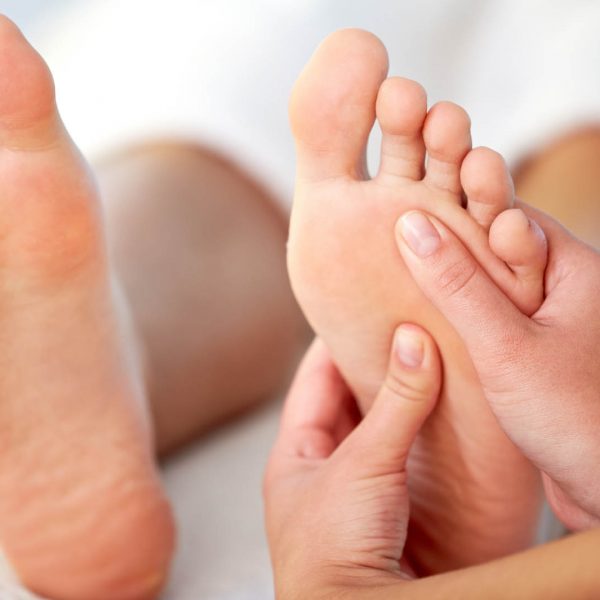Reflexology has been used for centuries to benefit health and wellbeing and there is ancient evidence that it has been used to aid fertility and conception and it still is to this day.
There is a stage in life when we start to reflect about having a family and what it means to us to become a mother, a father, and parent. To enter into that stage which society and culture has us believing is a natural rite of passage is not necessarily a straightforward path, made especially difficult when the reality dawns that falling pregnant is not that easy.
Reflexology for Fertility
For whatever reason unique to the individual couple, the anxiety, worry, and stress of an unmet desire can bring strain to relationships and even isolation from friends while the process of getting pregnant takes center stage. Reflexology has been used for fertility, pregnancy, childbirth, and parenthood for as long as humans have understood the therapeutic benefit of loving touch (Holt et al 2009). Reflexology assists in re-balancing the mind/body connection – enabling the recipient to regain homeostasis (Tiran 2010).
How Does Reflexology Work?
Reflexology is a massage technique that is applied by a reflexologist to specific acupressure points on the feet. The points on the feet correspond to a specific organ of the body. Applying pressure to these points on the feet stimulates movement or a release of energy/prana/chi to the corresponding organ. With time, a connection to your center and a deep therapeutic relaxation ensues. A treatment always provides solace and the space necessary for healing, allowing us to reconnect to our bodies within.
McCullough et al (2014) conducted a systematic review on the benefits of reflexology. Looking from a purely medical standpoint, which plotted quantifiable data, the findings were displayed as inconclusive. However, from my experience as a reflexologist, I argue that the research needs to come from another angle; one which measures the oxytocin release during the reflexology session and the effect this has on the body. Extensive research has been conducted into the “fight and flight” system in the body, where high levels of the hormones cortisol and adrenalin are released during times of high stress. In contrast, research into the sense of “calm and connectedness” we feel as a result of the release of oxytocin and endorphins during a reflexology, massage or acupuncture session is limited.
Reflexology for Reproductive Health Problems
Polycystic ovaries, cervical problems, adhesions (more commonly known as scar tissue), pelvic inflammatory disease, premenstrual syndrome, hormonal imbalances, blocked or damaged fallopian tubes, endometriosis, and menstrual problems, have all shown improvement from reflexology (Holt et al 2009, McCullough et al 2014 and Tiran D 2010). Within a few sessions, improved health and wellbeing surface. In order to address fertility health, a reflexology therapist will work through the reflexology points specific to the client’s area(s) of health concern, such as the:
- ovaries
- lymphatic system
- immune system
- uterus
- circulatory system
- neurological system (stress, anxiety, depression)
- endocrine system (hormone balance)
- liver (toxin release, hormone balance)
- kidneys (libido, fertility issues)
Reflexology works best when the client also ensures healthy lifestyle habits are in place. These include but are not limited to diet, exercise, relaxation, and work/life balance. No two reflexology treatments are the same for each session because the chosen points address the needs of the client on that particular day. Tailored treatment each session helps to ensure greater outcome.
Aside from releasing oxytocin and the endorphins responsible for intense relaxation, reflexology provides a space away from the speed of modern-day life and a chance to offload emotionally, physically, and mentally (Tiran D 2010). The treatment room provides a womb-like environment which absorbs the strain and tension of control which trying to get pregnant often brings. Acceptance and surrender to the unknown and the uncontrollable is sometimes all it takes for the body to let go and to fall pregnant.

About the Author:
Kristy Hawthorn is a Massage therapist for YOU Massage Therapy in Southampton, a trainee midwife and a Trainer in Infant Massage for Forty weeks, Ireland. Kristy works with women from conception to birth, helping create calm and wellness with Massage and Reflexology. She provides treatments ranging from reiki based meditative treatments to shiatsu massage. She has worked with pregnant women and their birth partners to teach massage for labor. Postnatally, Kristy is qualified to teach parents how to massage their own babies for a range of issues- colic, sleep and bonding.
- Holt, J., Lord, J., Acharya, U., White, A., Oneill, N., Shaw, S., & Barton, A. (2009). The effectiveness of foot reflexology in inducing ovulation: A sham-controlled randomized trial. Fertility and Sterility, 91(6), 2514-2519. doi:10.1016/j.fertnstert.2008.04.016 Retrieved from: https://europepmc.org/abstract/med/18565520
- Mccullough, J. E., Liddle, S. D., Sinclair, M., Close, C., & Hughes, C. M. (2014). The Physiological and Biochemical Outcomes Associated with a Reflexology Treatment: A Systematic Review. Evidence-Based Complementary and Alternative Medicine, 2014, 1-16. doi:10.1155/2014/502123 Retrieved from: https://www.hindawi.com/journals/ecam/2014/502123/
- Tiran D (2010) Reflexology in Pregnancy and Childbirth. Churchill Livingstone Elsevier : London





